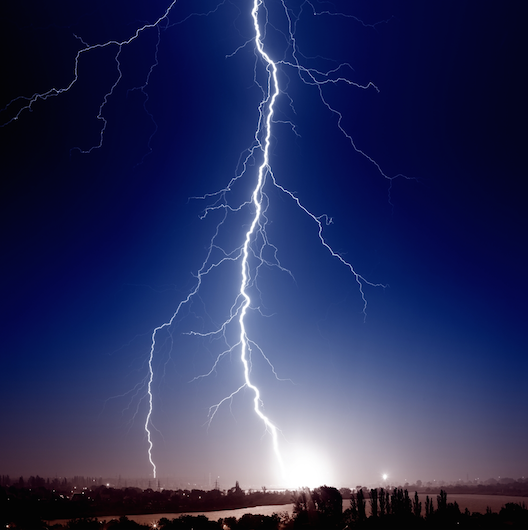
The Newest Threat to Increasing Optical Transmission

OPGW (optical ground wire) is a technology originally made to protect from the harmful effects of lightning. OPGW cables are strung between the tops of electrical distribution pylons to form a lightning shield for the power conducting cables beneath them. If a lightning strike hits the OPGW cable, the steel/aluminum outer covering protects the cable and the strike is shunted away harmlessly. OPGW cables play an important role in optical data transmission. The core of the cable contains optical fibers that can transmit data at rates of up to 100 Gbps or more. By piggy-backing on the existing power distribution infrastructure, OPGW allows great reductions in the costs associated with the long distance transmission of data. OPGW cables serve a dual role as lightning diverter and data transmitter because at lower data rates of 40 Gbps or less, the direct detection scheme employed (in which the receiver keys on the amplitude of the optical signal) is impervious to lightning strikes. At higher data rates of 100 Gbps per channel, a shift from direct detection to coherent detection is required. Coherent detectors track not only the amplitude, but also the phase and frequency of the optical signal, allowing great improvements in receiver sensitivity and channel capacity. Indicators suggest that faster transmission rates result in a higher sensitivity to lightning strikes. In a paper entitled “Impact of Lightning Strikes on Aerial Fiber Optic Cable,” Dr. Maxim Kuschnerov and Dr. Maximilian Herrmann, optical technologists at Coriant, describe how lightning strikes are now becoming an issue that must be addressed. The experts note that when lightning hits an OPGW cable, mechanical and thermal shock can cause rapid changes in polarization-mode dispersion (PMD) that can overwhelm the abilities of current DSP designs to quickly adjust. More importantly, a lightning strike can induce strong magnetic fields in the optical fibers of the OPGW cable, “causing a Faraday Effect on the propagating light.” Kuschnerov and Herrmann quote Jean-Sébastien Tassé, product line manager at test and measurement company EXFO saying that a number of cases around the world have been noted in which “lightning strikes are a highly probable cause of increased bit-error rate (BER) in coherent systems.” The evidence indicates that with the shift to coherent detection systems as data rates increase to 100 Gbps and beyond, the telecommunications industry must begin paying much more attention to the effects lightning strikes may have on the reliability and throughput of OPGW-based transmission systems. To learn more about these technologies or to discuss your optical transceiver needs, please contact us.






